#black blotched tabby bicolor
Note
Saw your tags on that poll, are you getting an NFC??
Indeed I am!
I applied for it around a year ago, but i knew i wanted the kitten to arrive only after i finished university and moved back home. (If everything goes well, i'll get my master's degree in a month; after that please address me only as Mr. Amber-Tortoiseshell.)
So. My future kitten. The next litter in the cattery is promised to be born in the middle of june. Naturally i calculated the possible colors ages ago:

But if they announce another litter before I book a kitten here (it's possible, i've been talking with the breeder), maybe i'll wait out that one, we can get more interesting colors there. (Mackerels! Tortoiseshells! Solids! Maybe harlequins, depending on the father!)
#alas no ambers#maybe once in the future#ask and answer#our cats#colors side by side#black blotched tabby with white#black blotched tabby bicolor#blue blotched tabby with white#blue blotched tabby bicolor
26 notes
·
View notes
Text
Okay so I know there's always a lot of "Mungojerrie's a male calico and that's like insanely rare omg he's so special!" in the cats fandom. But that feels so weird to me because... well let me break it down. I have two arguments:
Firstly, I want to acknowledge a theory, one that the whole "calico Mungo=calico male=super rare omg!" thing quite unfairly ignores, a very very good theory I've seen floating around occasionally, that Mungo is trans. This is an excellent theory and I love it, though I personally don't hc Mungo this way (I have my theories on who in the tribe is trans, just Mungo's not currently one of them). It would definitely explain why a male presenting Cat would have a normally female-exclusive color pattern
BUT
and here's my second argument, what if calicos are NOT exclusively born female in the universe Cats takes place in?
Hear me out
Calico is defined as a pattern consisting of at least 25%-75% white, with at least two other colors. The two other colors are typically orange/red and black, but can be brown, grey, tan, cream, gold, lilac, blue-grey, etc. (To my understanding this doesn't include darker shades of the same color as often seen in tabbies, for example an orange base with darker orange stripes in a ginger tabby)
Now let's have a look at how many male Cats fit this description:
Mungojerrie

Of course, the obvious one, with the most easily recognizable calico pattern in a fairly even distribution of orange, white, and black
Plato/Admetus (name depending on production)

Carrot top boi with black and red blotches on a white base, pictured here with actual calico for comparison
Pouncival/Carbucketty

White base, with black, brown, and sometimes rust stripes and patches
Tumblebrutus/Bill Bailey

Same story as Pounce, pictured here again with actual calico
Macavity

This one depends on the particular production's costume, but in quite a few, including the 1998 video, he's got enough white to quality as well as black and gold stripes and sometimes patches on a mostly red base
Coricopat

Again, not all his costumes include enough white to qualify, but the majority of the ones I've seen feature plenty of white plus lots of black/dark brown and a decent amount of orange/gold stripes/splotches
Honorary Mentions: Some interpretations of Skimble have enough white and black to technically qualify, but I'm not including him here because it's not nearly so common as the others. Usually Skimble's white marks are less than 25%. There's also some argument for Admetus/George depending on production, but his greys browns and blacks are too similar for me, I think he's just a tabby, plus he doesn't always have enough white
Mungo's starting to look a little less special isn't he? (No offense Mungo, you're very special for other reasons)
Could all if these boys be trans? Absolutely! It's 100% possible these are all trans characters. Not my personal hc (again, I have my theories, and none of these are among them… currently…), but it's an entirely valid hc.
Could all these be interpreted as something else? Well, I guess potentially Mac could be seen as a red tabby and the black marks could represent dark red, and his different costume interpretations certainly complicate things. Pounce and Brutus could also be potentially interpreted as bicolor brown tabbies, but it's a lot harder to make that argument with them, especially with the flecks of gold or rust that are often included in their costumes, and that much of their color is in patches rather than stripes. Cori, ehhh I mean I guess you could argue he's supposed to be a hypermelanistic orange tabby, idk I feel like that's reaching at this point, but I guess that's a valid interpretation.
But Plato.
No.
There's no alternate interpretation.
Plato is a calico. End of story.
So in conclusion, I think calico males are actually a lot less rare in the Cats universe than they are in reality thank you for coming to my TED talk.
Bonus: three calicos and brown tabby being a fan club


Extra Bonus: Three calicos dancing in the dressing room


#Boy I hope Tumblr doesn't eat the images this time…#Mungojerrie#Plato#Admetus#Pouncival#Tumblebrutus#Carbucketty#Bill Bailey#Macavity#Coricopat#Tantomile#Rumpleteazer#George#Calico#Cats theorys#cats hcs#my hcs#cats musical#well tumblr effed up the formatting let's see if editing fixes it...#woohoo its fixed!#you don't know dude i been trying to post this for days!#FINALLY!!!
90 notes
·
View notes
Text
What Color Is Your Cat?
Domestic cats come in four main colors.
Red / Orange (x)

Light Brown (x)
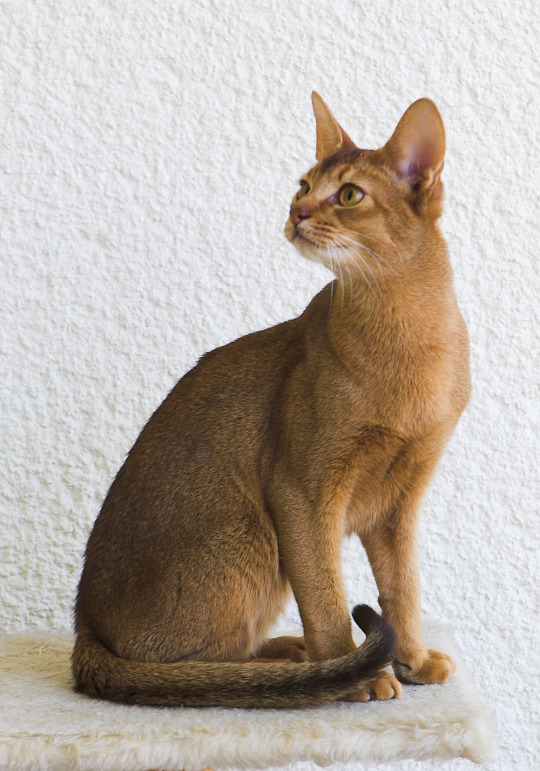
Dark Brown (x)
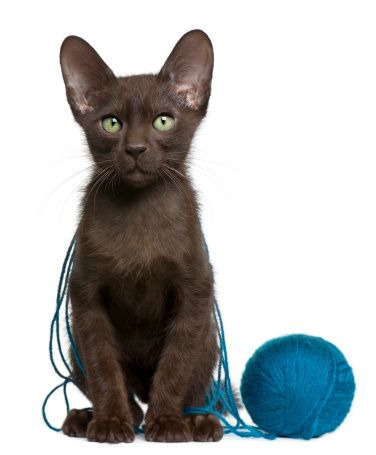
and Black (x)
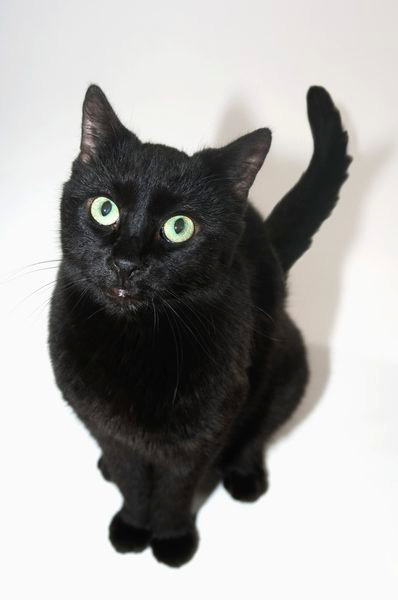
These four basic colors are the “deep” colors. This means the individual fur hairs have the color pigment all the way down the shaft. This creates a beautiful, “deep” color.
However, when the gene for agouti hairs is active, the pigment will instead gather in bands along the hair shaft. This creates a lovely “dilute” color that, to the naked eye, appears paler than the deep, nonagouti hairs. (x)
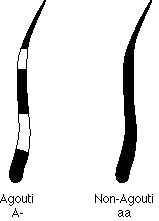
Instead of Red, you get Cream (x)
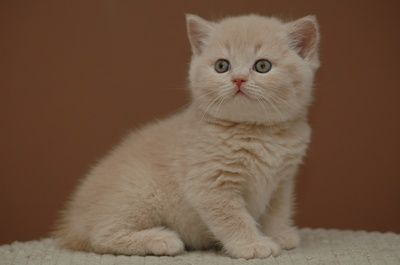
Instead of Light Brown, you get Fawn (x)
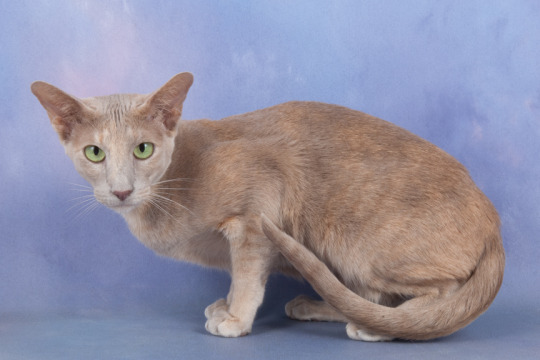
Instead of Dark Brown, it’s Lilac (x)
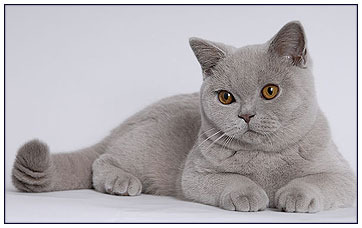
And instead of Black, it’s Gray / Blue (x)

There are also two special case colors. The first is white. White cats still contain the genetic markers for a non-white color, but the “white gene” masks that color and makes the hairs white.
The second special color is silver. A mutation that can happen to cats with any genetic color predisposition, it removes the yellowish or tannish pigment from the hairs, leaving them a beautiful silver instead. (x)

Except for black and gray, it usually takes special breeding to get a cat that is a solid color. Most cats will have a combination of colors and markings that makes them beautiful and unique.
Since they have a common ancestor in the African Wildcat, all domestic cats carry the gene for a tabby pattern. (x)
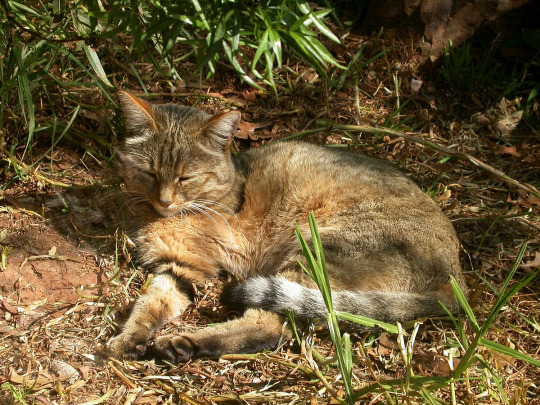
Even solid-colored cats will sometimes show a “ghost tabby” pattern under the right light, especially as a kitten. (x)
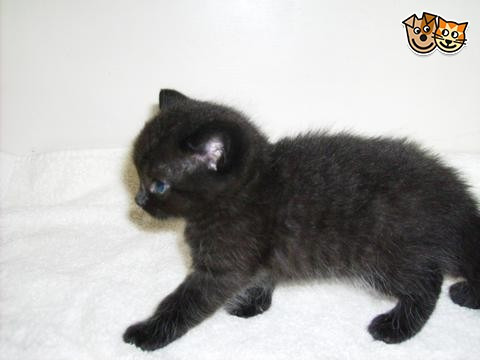
Patterns form when agouti hairs and nonagouti hairs gather in various patches, stripes, and dots on the cat. Where the nonagouti hairs gather, the cat will appear darker, and where there are more agouti hairs, the cat will appear lighter.
Is your cat a tabby?
As mentioned above, all cats carry the gene for the tabby pattern, though it is not always visible. There are four main kinds of tabby patterns.
Mackerel Tabby (x)
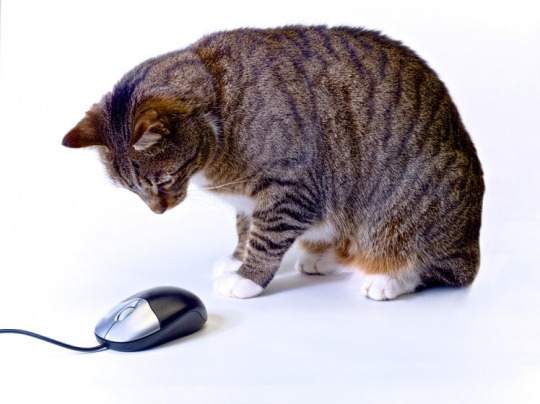
The original tabby pattern, it is so called because the stripes down the sides resemble the bones of a fish.
Classic Tabby (x)
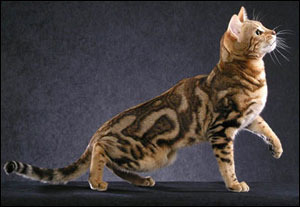
Also called a “blotched tabby.”
Spotted Tabby (x)

This pattern only rarely shows up in the domestic short- and longhair breeds. It usually requires special breeding to bring about.
Ticked Tabby (x)

A cat is considered a ticked tabby if her fur is almost entirely agouti hairs and has minimal visible pattern.
All tabby cats have an M shape on their foreheads. (x)
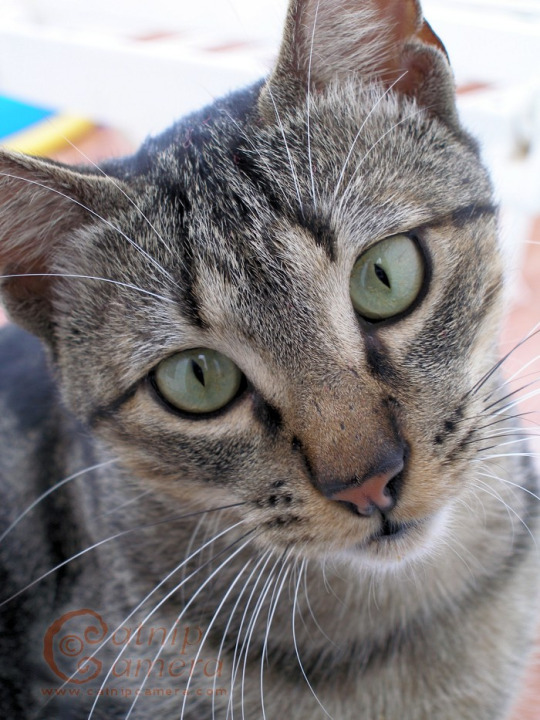
White patches? It’s piebald!
Piebald simply means your cat has white on it, but isn’t all white. There are different terms for piebald, or particolor, cats depending on the amount and placement of the white vs. the color.
Van (x)

Mostly white with patches of color mainly on the head and tail
Bicolor (x)
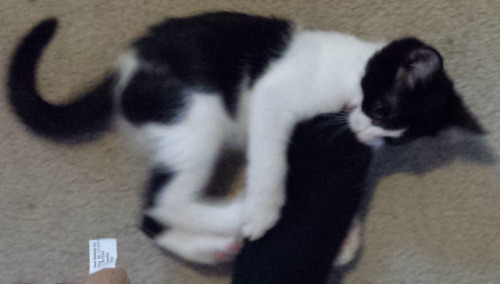
One to two thirds white, bicolor cats usually have color markings on their heads and torsos as well as tails.
Mitted (x)
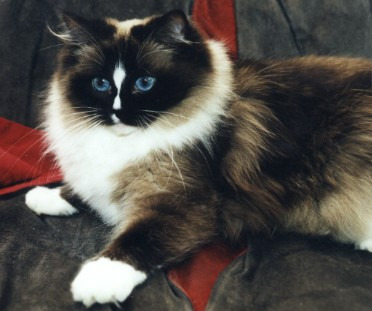
While mitted cats, obviously, have white on their paws, they can also have white on their chin, chest, belly, and back legs.
Lockets (x)
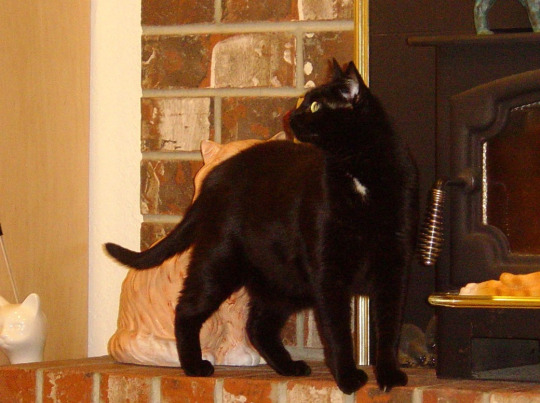
As you can see, the white patch looks like a locket on a necklace sitting on the chest. Small white patches can also be referred to as “buttons” and appear in other places on the body.
But wait... My cat is more colorful than that!
Tortoiseshell, or “Tortie,” patterns appear when a cat has two different color genes in her DNA and neither is dominant over the other. These colors are usually red and black, though other combinations can appear as well. Since the color gene is carried on the X chromosome, only female cats can exhibit tortie patterns. (The exception being an XXY intersex condition, but those males will be infertile.)
There are several tortie patterns...
Tortoiseshell (x)
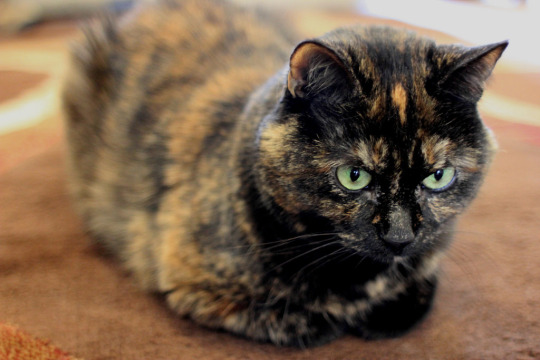
Classic red and black. Beautiful!
Calico (x)

When a tortie has patches of white, she’s called a calico.
Torbie (x)
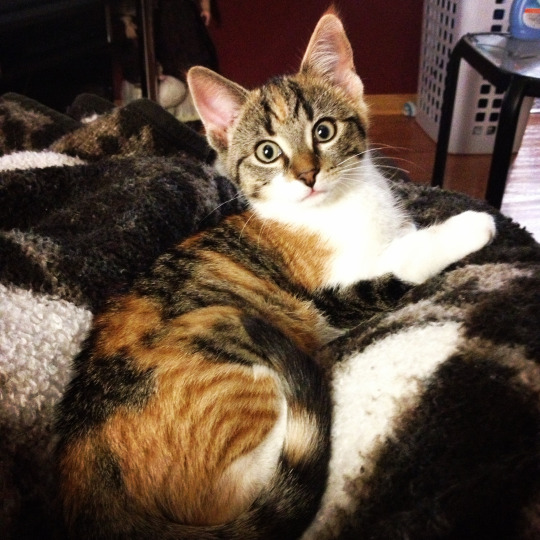
A tortie cat with a visible tabby pattern is called a torbie or patched tabby.
Pointed Cats
They’re not sharp and pointy--well, not more than any other cat. No, the term “pointed” refers to the fact that these cats have light-colored bodies with darker color appearing only at certain “points.” (Yeah, I would’ve come up with a better name too, but it’s stuck now.)
When thinking of a pointed cat, most people will think of the Siamese cat breed. They are pointed, but not all pointed cats are Siamese.
Colorpoint (x)
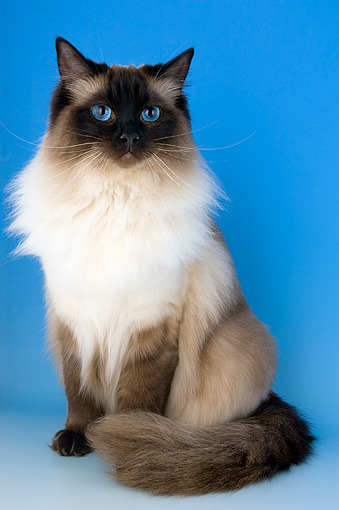
The darker patches are solid or unpatterned.
Tortie Point (x)
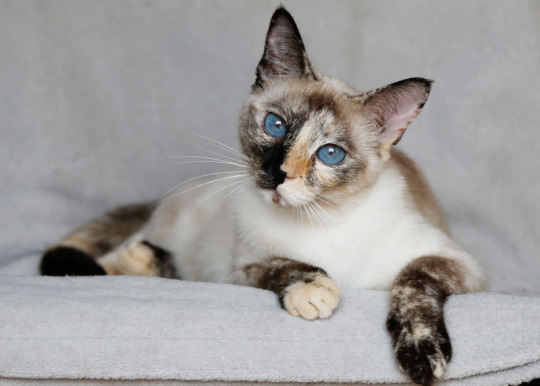
The darker patches have a tortie pattern.
Lynx Point (x)
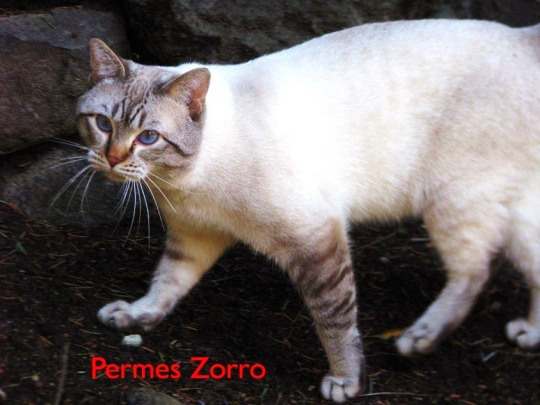
Lynx point patterns have stripes on the darker patches.
Tortie Lynx Point (x)

A combination of the tortie and lynx characteristics.
So, now that you have all the information you need, tell me
What Color Is Your Cat?
274 notes
·
View notes
Text
List of cat breeds
Official Website: List of cat breeds
Abyssinian Ethiopia Natural Oriental Short Ticked
jQuery(document).ready(function($) var data = action: 'polyxgo_products_search', type: 'Product', keywords: 'Abyssinian', orderby: 'rand', order: 'DESC', template: '1', limit: '4', columns: '4', viewall:'Shop All', ; jQuery.post(spyr_params.ajaxurl,data, function(response) var obj = jQuery.parseJSON(response); jQuery('#thelovesof_abyssinian').html(obj); jQuery('#thelovesof_abyssinian img.swiper-lazy:not(.swiper-lazy-loaded)' ).each(function () var img = jQuery(this); img.attr("src",img.data('src')); img.addClass( 'swiper-lazy-loaded' ); img.removeAttr('data-src'); ); ); );
Aegean Greece Natural Semi-long Bicolored or tricolored
Aegean
American Curl United States Mutation Short/long All
American Curl
American Bobtail United States Mutation Short/long All
American Bobtail
American Shorthair United States Natural Short All but colorpoint
American Shorthair
American Wirehair United States Mutation Rex All but colorpoint
American Wirehair
Aphrodite Giant Cyprus Natural Lean and muscular All All but cinammon and chocolate
Aphrodite Giant
Arabian Mau Arabian Peninsula Natural Short
Arabian Mau
Australian Mist Australia Crossbreed: Abyssinian and Burmese Moderate Short Spotted or tabby
Australian Mist
Asian Developed in the United Kingdom (foundation stock from Asia) Short Evenly solid
Asian
Asian Semi-longhair United Kingdom Crossbreed: Burmese and long-haired cats Semi-long Evenly solid
Asian Semi-longhair
Balinese Developed in the United States (foundation stock from Thailand) Oriental Long Colorpoint
Balinese
Bambino United States Crossbreed: Munchkin and Sphynx Dwarf Hairless or downy
Bengal Developed in the United States (foundation stock from Asia) Hybrid: Abyssinian and Egyptian Mau × leopard cat (Prionailurus bengalensis) Short Spotted, marbled, or rosetted
Bengal
Birman Developed in France (foundation stock from Burma, etc.) Crossbreed: original Birman (near extinction) with Persian and Siamese Semi-long Colorpoint with white feet
Birman
Bombay Developed in the United States (some foundation stock from Burma and Thailand) Crossbreed: American Shorthair and Burmese Moderate Short Solid black
Bombay
Brazilian Shorthair Brazil Natural Short All
Brazilian Shorthair
British Semi-longhair United Kingdom Cobby Medium All
British Semi-longhair
British Shorthair United Kingdom Natural Cobby Short All
British Shorthair
British Longhair United Kingdom Cobby Long All
British Longhair
Burmese Burma Natural Short Solid
Burmese
Burmilla United Kingdom Crossbreed: Burmese and Chinchilla Persian Short/long Solid, in Shaded Silver and Silver Tipped patterns
Burmilla
California Spangled United States Crossbreed: Abyssinian, American Shorthair and British Shorthair Short Spotted
California Spangled
Chantilly-Tiffany United States Solid, ticked, spotted and blotched tabby
Chantilly-Tiffany
Chartreux France Natural Cobby Short Solid blue
Chartreux
Chausie France Hybrid: Abyssinian× jungle cat (Felis chaus) Short Ticked
Chausie
Colorpoint Shorthair
(for Colorpoint Longhair, see Javanese below) Short Colorpoint
Colorpoint Shorthair
Cornish Rex United Kingdom (England) Mutation Rex All
Cornish Rex
Cymric or
Manx Longhair;
Longhaired Manx[a] United Kingdom (Isle of Man), and Canada Mutation, from original Manx Long All but colorpoint
Cymric
Cyprus Cyprus Natural Lean and muscular All All but colorpoint and mink
Cyprus
Devon Rex United Kingdom (England) Mutation Oriental Rex All
Devon Rex
Donskoy or
Don Sphynx Russia Hairless
Donskoy or Don Sphynx
Dragon Li or
Chinese Li Hua China Natural Short Striped tabby
Dragon Li or Chinese Li Hua
Dwelf Crossbreed: American Curl, Munchkin and Sphinx Dwarf Hairless
Dwelf
Egyptian Mau Egypt Natural Short Spotted
Egyptian Mau
European Shorthair Finland and Sweden Natural Short All but chocolate, lilac, cinnamon, fawn, amber, ticked, or colorpoint
European Shorthair
Exotic Shorthair United States Crossbreed: American Shorthair and Persian Cobby Short All
Exotic Shorthair
Foldex[5] Canada Crossbreed: Exotic Shorthair and Scottish Fold Cobby Short All
Foldex
German Rex East Germany Mutation Rex All
German Rex
Havana Brown United Kingdom Crossbreed: Siamese and black short-haired cats Short Solid brown
Havana Brown
Highlander United States Crossbreed/hybrid: Desert Lynx and Jungle Curl Moderate Short/long All
Highlander
Himalayan or
Colorpoint Persian[b] United States and United Kingdom Crossbreed: Persian and Siamese Cobby Long Colorpoint
Himalayan or Colorpoint Persian
Japanese Bobtail Japan Natural, mutation Moderate Short/long All but colorpoint and ticked
Japanese Bobtail
Javanese or
Colorpoint Longhair[c] Developed in the United States and Canada (foundation stock from Southeast Asia) Crossbreed: Balinese, with some Colorpoint Shorthair, Oriental Longhair and Siamese Oriental Long Colorpoint
Javanese or Colorpoint Longhair
Karelian Bobtail Western Russia Natural, mutation
Khao Manee Thailand Natural Short Solid white
Khao Manee
Korat Thailand Natural Short Solid blue
Korat
Korean Bobtail Korea Natural, mutation Short/long Colorprint
Korn Ja Thailand Natural Short/hairless Solid
Kurilian Bobtail or
Kuril Islands Bobtail Eastern Russia and Japan Natural, mutation Semi-cobby Short/long All but colorpoint
Kurilian Bobtail or Kuril Islands Bobtail
LaPerm United States Mutation Moderate Rex All
LaPerm
Lykoi United States Mutation Partly hairless Ticked
Lykoi
Maine Coon United States Natural Large Long All but colorpoint and ticked
Maine Coon
Manx United Kingdom (Isle of Man) Natural, mutation Short/long All but colorpoint
Manx
Mekong Bobtail Russia Mutation Short Colorpoint
Mekong Bobtail
Minskin United States Crossbreed: Munchkin and Sphynx Dwarf; semi-cobby Short/hairless All
Minskin
Munchkin United States Mutation Dwarf Short/long All
Munchkin
Nebelung United States Semi-long Solid blue
Nebelung
Napoleon Short/long Varied
Norwegian Forest Cat Norway Natural Long Traditional, sepia, or mink
Norwegian Forest Cat
Ocicat United States Crossbreed: Abyssinian, American Shorthair and Siamese Short Spotted
Ocicat
Ojos Azules United States All
Oregon Rex United States Mutation Rex
Oriental Bicolor Developed in the United States and United Kingdom, later in Continental Europe; foundation stock ultimately from Thailand Oriental Bicolor
Oriental Bicolor
Oriental Shorthair[d] Developed in the United States and later the United Kingdom; foundation stock ultimately from Thailand Crossbreed: European Shorthair and Siamese Oriental Short All but colorpoint
Oriental Shorthair
Oriental Longhair[d] or
Foreign Longhair;
Mandarin;
British Angora (obsolete) Developed in the United Kingdom and United States; foundation stock ultimately from Thailand Oriental Semi-long All but colorpoint
Persian (modern) Developed in the United States and Europe (foundation stock from Greater Iran) Mutation, from the traditional Persian Cobby Long All
Persian, modern
Persian (traditional) Greater Iran Natural, but some crossing with Turkish Angora Cobby Long All
Traditional Persian
Peterbald Russia Crossbreed: Donskoy, Oriental Shorthair and Siamese; early: Balinese and Javanese Oriental Hairless/flocked, velour, brush, or straight coat All
Peterbald
Pixie-bob United States Mutation (falsely claimed to be a bobcat hybrid early on) Short Spotted
Pixie-bob
Raas Indonesia Natural Short
Ragamuffin, or
Liebling (obsolete) United States Crossbreed: Ragdoll with limited out-crossing to Himalayan, Persian, other long-haired cats Cobby Long All
Ragamuffin
Ragdoll United States Mutation (behavioral) in a crossbreed, presumed Persian or Turkish Angora and Birman or Burmese Cobby Long Colorpoint, mitted, or bicolor
Ragdoll
Russian Blue Russia Natural Short Solid blue
Russian Blue
Russian White, Black, and Tabby Developed in Australia (foundation stock from Russia) Crossbreeds: Russian Blue and short-haired cats from Siberia (Russia) Short Solid white, solid black and tabby
Sam Sawet Thailand Natural Short Solid
Savannah United States Hybrid: Domestic cat × serval (Leptailurus serval)[6] Large Short Spotted
Savannah
Scottish Fold United Kingdom (Scotland) Mutation Cobby Short/long All
Lilac-coated Scottish Fold
Selkirk Rex United States Mutation, crossbreed: American Shorthair, Persian, Himalayan, Exotic Shorthair and British Shorthair Rex (Short/long) All
Selkirk Rex
Serengeti United States Crossbreed/hybrid: Bengal and Oriental Shorthair Short Spotted
Serengeti
Serrade petit France Natural Short
Serrade petit
Siamese (modern)
(for traditional, see Thai below) Developed in the United States and Europe (foundation stock from Thailand) Mutation, from traditional Siamese (now known as Thai) Oriental Short Colorpoint
Siamese
Siberian or
Siberian Forest Cat;
Neva Masquerade (colorpoint variety) Russia Natural Semi-cobby Semi-long All
Siberian
Singapura United States Crossbreed: Burmese and Abyssinian Short Ticked
Singapura
Snowshoe United States Crossbreed: American Shorthair and Siamese Short Colorpoint with white feet
Snowshoe
Sokoke Kenya Natural Short Ticked tabby
Sokoke
Somali Somalia Mutation Long Ticked
Somali
Sphynx Canada Mutation Oriental Hairless All
Sphynx
Suphalak Thailand Natural Short Solid
Suphalak
Thai or
Traditional, Classic, or Old-style Siamese;
Wichien Maat[e] Thailand Natural Moderate Short Colorpoint
Thai
Thai Lilac Thailand Natural Short Solid lilac
Thai Lilac
Tonkinese Canada Crossbreed: Burmese and Siamese Short Colorpoint, mink, or solid
Tonkinese
Toyger United States Crossbreed/hybrid: Bengal and short-haired cats Moderate Short Striped
Toyger
Turkish Angora Turkey Natural Semi-long All but colorpoint
Turkish Angora
Turkish Van Developed in the United Kingdom (foundation stock from Turkey) Natural Semi-long Van pattern
Turkish Van
Ukrainian Levkoy Ukraine Hairless
Ukrainian Levkoy
Wila Krungthep Thailand Natural Short Solid
York Chocolate United States (New York) Natural Long Solid brown
York Chocolate
jQuery(document).ready(function($) var data = action: 'polyxgo_products_search', type: 'Product', keywords: 'Cat', orderby: 'rand', order: 'DESC', template: '1', limit: '4', columns: '4', viewall:'Shop All', ; jQuery.post(spyr_params.ajaxurl,data, function(response) var obj = jQuery.parseJSON(response); jQuery('#thelovesof_cat').html(obj); jQuery('#thelovesof_cat img.swiper-lazy:not(.swiper-lazy-loaded)' ).each(function () var img = jQuery(this); img.attr("src",img.data('src')); img.addClass( 'swiper-lazy-loaded' ); img.removeAttr('data-src'); ); ); );
0 notes
Text
List of cat breeds
Official Website: List of cat breeds
Abyssinian Ethiopia Natural Oriental Short Ticked
jQuery(document).ready(function($) var data = action: 'polyxgo_products_search', type: 'Product', keywords: 'Abyssinian', orderby: 'rand', order: 'DESC', template: '1', limit: '4', columns: '4', viewall:'Shop All', ; jQuery.post(spyr_params.ajaxurl,data, function(response) var obj = jQuery.parseJSON(response); jQuery('#thelovesof_abyssinian').html(obj); jQuery('#thelovesof_abyssinian img.swiper-lazy:not(.swiper-lazy-loaded)' ).each(function () var img = jQuery(this); img.attr("src",img.data('src')); img.addClass( 'swiper-lazy-loaded' ); img.removeAttr('data-src'); ); ); );
Aegean Greece Natural Semi-long Bicolored or tricolored
Aegean
American Curl United States Mutation Short/long All
American Curl
American Bobtail United States Mutation Short/long All
American Bobtail
American Shorthair United States Natural Short All but colorpoint
American Shorthair
American Wirehair United States Mutation Rex All but colorpoint
American Wirehair
Aphrodite Giant Cyprus Natural Lean and muscular All All but cinammon and chocolate
Aphrodite Giant
Arabian Mau Arabian Peninsula Natural Short
Arabian Mau
Australian Mist Australia Crossbreed: Abyssinian and Burmese Moderate Short Spotted or tabby
Australian Mist
Asian Developed in the United Kingdom (foundation stock from Asia) Short Evenly solid
Asian
Asian Semi-longhair United Kingdom Crossbreed: Burmese and long-haired cats Semi-long Evenly solid
Asian Semi-longhair
Balinese Developed in the United States (foundation stock from Thailand) Oriental Long Colorpoint
Balinese
Bambino United States Crossbreed: Munchkin and Sphynx Dwarf Hairless or downy
Bengal Developed in the United States (foundation stock from Asia) Hybrid: Abyssinian and Egyptian Mau × leopard cat (Prionailurus bengalensis) Short Spotted, marbled, or rosetted
Bengal
Birman Developed in France (foundation stock from Burma, etc.) Crossbreed: original Birman (near extinction) with Persian and Siamese Semi-long Colorpoint with white feet
Birman
Bombay Developed in the United States (some foundation stock from Burma and Thailand) Crossbreed: American Shorthair and Burmese Moderate Short Solid black
Bombay
Brazilian Shorthair Brazil Natural Short All
Brazilian Shorthair
British Semi-longhair United Kingdom Cobby Medium All
British Semi-longhair
British Shorthair United Kingdom Natural Cobby Short All
British Shorthair
British Longhair United Kingdom Cobby Long All
British Longhair
Burmese Burma Natural Short Solid
Burmese
Burmilla United Kingdom Crossbreed: Burmese and Chinchilla Persian Short/long Solid, in Shaded Silver and Silver Tipped patterns
Burmilla
California Spangled United States Crossbreed: Abyssinian, American Shorthair and British Shorthair Short Spotted
California Spangled
Chantilly-Tiffany United States Solid, ticked, spotted and blotched tabby
Chantilly-Tiffany
Chartreux France Natural Cobby Short Solid blue
Chartreux
Chausie France Hybrid: Abyssinian× jungle cat (Felis chaus) Short Ticked
Chausie
Colorpoint Shorthair
(for Colorpoint Longhair, see Javanese below) Short Colorpoint
Colorpoint Shorthair
Cornish Rex United Kingdom (England) Mutation Rex All
Cornish Rex
Cymric or
Manx Longhair;
Longhaired Manx[a] United Kingdom (Isle of Man), and Canada Mutation, from original Manx Long All but colorpoint
Cymric
Cyprus Cyprus Natural Lean and muscular All All but colorpoint and mink
Cyprus
Devon Rex United Kingdom (England) Mutation Oriental Rex All
Devon Rex
Donskoy or
Don Sphynx Russia Hairless
Donskoy or Don Sphynx
Dragon Li or
Chinese Li Hua China Natural Short Striped tabby
Dragon Li or Chinese Li Hua
Dwelf Crossbreed: American Curl, Munchkin and Sphinx Dwarf Hairless
Dwelf
Egyptian Mau Egypt Natural Short Spotted
Egyptian Mau
European Shorthair Finland and Sweden Natural Short All but chocolate, lilac, cinnamon, fawn, amber, ticked, or colorpoint
European Shorthair
Exotic Shorthair United States Crossbreed: American Shorthair and Persian Cobby Short All
Exotic Shorthair
Foldex[5] Canada Crossbreed: Exotic Shorthair and Scottish Fold Cobby Short All
Foldex
German Rex East Germany Mutation Rex All
German Rex
Havana Brown United Kingdom Crossbreed: Siamese and black short-haired cats Short Solid brown
Havana Brown
Highlander United States Crossbreed/hybrid: Desert Lynx and Jungle Curl Moderate Short/long All
Highlander
Himalayan or
Colorpoint Persian[b] United States and United Kingdom Crossbreed: Persian and Siamese Cobby Long Colorpoint
Himalayan or Colorpoint Persian
Japanese Bobtail Japan Natural, mutation Moderate Short/long All but colorpoint and ticked
Japanese Bobtail
Javanese or
Colorpoint Longhair[c] Developed in the United States and Canada (foundation stock from Southeast Asia) Crossbreed: Balinese, with some Colorpoint Shorthair, Oriental Longhair and Siamese Oriental Long Colorpoint
Javanese or Colorpoint Longhair
Karelian Bobtail Western Russia Natural, mutation
Khao Manee Thailand Natural Short Solid white
Khao Manee
Korat Thailand Natural Short Solid blue
Korat
Korean Bobtail Korea Natural, mutation Short/long Colorprint
Korn Ja Thailand Natural Short/hairless Solid
Kurilian Bobtail or
Kuril Islands Bobtail Eastern Russia and Japan Natural, mutation Semi-cobby Short/long All but colorpoint
Kurilian Bobtail or Kuril Islands Bobtail
LaPerm United States Mutation Moderate Rex All
LaPerm
Lykoi United States Mutation Partly hairless Ticked
Lykoi
Maine Coon United States Natural Large Long All but colorpoint and ticked
Maine Coon
Manx United Kingdom (Isle of Man) Natural, mutation Short/long All but colorpoint
Manx
Mekong Bobtail Russia Mutation Short Colorpoint
Mekong Bobtail
Minskin United States Crossbreed: Munchkin and Sphynx Dwarf; semi-cobby Short/hairless All
Minskin
Munchkin United States Mutation Dwarf Short/long All
Munchkin
Nebelung United States Semi-long Solid blue
Nebelung
Napoleon Short/long Varied
Norwegian Forest Cat Norway Natural Long Traditional, sepia, or mink
Norwegian Forest Cat
Ocicat United States Crossbreed: Abyssinian, American Shorthair and Siamese Short Spotted
Ocicat
Ojos Azules United States All
Oregon Rex United States Mutation Rex
Oriental Bicolor Developed in the United States and United Kingdom, later in Continental Europe; foundation stock ultimately from Thailand Oriental Bicolor
Oriental Bicolor
Oriental Shorthair[d] Developed in the United States and later the United Kingdom; foundation stock ultimately from Thailand Crossbreed: European Shorthair and Siamese Oriental Short All but colorpoint
Oriental Shorthair
Oriental Longhair[d] or
Foreign Longhair;
Mandarin;
British Angora (obsolete) Developed in the United Kingdom and United States; foundation stock ultimately from Thailand Oriental Semi-long All but colorpoint
Persian (modern) Developed in the United States and Europe (foundation stock from Greater Iran) Mutation, from the traditional Persian Cobby Long All
Persian, modern
Persian (traditional) Greater Iran Natural, but some crossing with Turkish Angora Cobby Long All
Traditional Persian
Peterbald Russia Crossbreed: Donskoy, Oriental Shorthair and Siamese; early: Balinese and Javanese Oriental Hairless/flocked, velour, brush, or straight coat All
Peterbald
Pixie-bob United States Mutation (falsely claimed to be a bobcat hybrid early on) Short Spotted
Pixie-bob
Raas Indonesia Natural Short
Ragamuffin, or
Liebling (obsolete) United States Crossbreed: Ragdoll with limited out-crossing to Himalayan, Persian, other long-haired cats Cobby Long All
Ragamuffin
Ragdoll United States Mutation (behavioral) in a crossbreed, presumed Persian or Turkish Angora and Birman or Burmese Cobby Long Colorpoint, mitted, or bicolor
Ragdoll
Russian Blue Russia Natural Short Solid blue
Russian Blue
Russian White, Black, and Tabby Developed in Australia (foundation stock from Russia) Crossbreeds: Russian Blue and short-haired cats from Siberia (Russia) Short Solid white, solid black and tabby
Sam Sawet Thailand Natural Short Solid
Savannah United States Hybrid: Domestic cat × serval (Leptailurus serval)[6] Large Short Spotted
Savannah
Scottish Fold United Kingdom (Scotland) Mutation Cobby Short/long All
Lilac-coated Scottish Fold
Selkirk Rex United States Mutation, crossbreed: American Shorthair, Persian, Himalayan, Exotic Shorthair and British Shorthair Rex (Short/long) All
Selkirk Rex
Serengeti United States Crossbreed/hybrid: Bengal and Oriental Shorthair Short Spotted
Serengeti
Serrade petit France Natural Short
Serrade petit
Siamese (modern)
(for traditional, see Thai below) Developed in the United States and Europe (foundation stock from Thailand) Mutation, from traditional Siamese (now known as Thai) Oriental Short Colorpoint
Siamese
Siberian or
Siberian Forest Cat;
Neva Masquerade (colorpoint variety) Russia Natural Semi-cobby Semi-long All
Siberian
Singapura United States Crossbreed: Burmese and Abyssinian Short Ticked
Singapura
Snowshoe United States Crossbreed: American Shorthair and Siamese Short Colorpoint with white feet
Snowshoe
Sokoke Kenya Natural Short Ticked tabby
Sokoke
Somali Somalia Mutation Long Ticked
Somali
Sphynx Canada Mutation Oriental Hairless All
Sphynx
Suphalak Thailand Natural Short Solid
Suphalak
Thai or
Traditional, Classic, or Old-style Siamese;
Wichien Maat[e] Thailand Natural Moderate Short Colorpoint
Thai
Thai Lilac Thailand Natural Short Solid lilac
Thai Lilac
Tonkinese Canada Crossbreed: Burmese and Siamese Short Colorpoint, mink, or solid
Tonkinese
Toyger United States Crossbreed/hybrid: Bengal and short-haired cats Moderate Short Striped
Toyger
Turkish Angora Turkey Natural Semi-long All but colorpoint
Turkish Angora
Turkish Van Developed in the United Kingdom (foundation stock from Turkey) Natural Semi-long Van pattern
Turkish Van
Ukrainian Levkoy Ukraine Hairless
Ukrainian Levkoy
Wila Krungthep Thailand Natural Short Solid
York Chocolate United States (New York) Natural Long Solid brown
York Chocolate
jQuery(document).ready(function($) var data = action: 'polyxgo_products_search', type: 'Product', keywords: 'Cat', orderby: 'rand', order: 'DESC', template: '1', limit: '4', columns: '4', viewall:'Shop All', ; jQuery.post(spyr_params.ajaxurl,data, function(response) var obj = jQuery.parseJSON(response); jQuery('#thelovesof_cat').html(obj); jQuery('#thelovesof_cat img.swiper-lazy:not(.swiper-lazy-loaded)' ).each(function () var img = jQuery(this); img.attr("src",img.data('src')); img.addClass( 'swiper-lazy-loaded' ); img.removeAttr('data-src'); ); ); );
0 notes
Text
The Fascinating Facts Behind Cat Colors
(adsbygoogle = window.adsbygoogle || []).push({ google_ad_client: "ca-pub-9215988308746328", enable_page_level_ads: true });
Cat colors, patterns and fur length are a cat's calling card. We include these features when referring to specific types of felines. For example, we would call fictional cat Garfield a red tabby Exotic Shorthair.
Note the color, pattern, coat and coat length in the name. The cat fancy – or the community of feline enthusiasts, cat show judges, breed registries, breeders and others who study and adore felines – gave us these designations to make it easier to identify cats.
This may seem hard to believe, but these are some of the most important things in the world. It almost does not seem fair when you get 15 vivid colors like pink, green, blue, yellow and purple.
"Birds derive from their brilliant coloring because of the chemical structure of their feathers and amino acid modifiers, which is different from that of cat coat textures where pigmentation is based on melanin types," says Joan Miller, the Cat Fanciers' Association's outreach and education chair. and renowned cat expert.
Cat colors – what coat colors can cats have?
Cats basically come in black, white or some combination, dilution or mixture of these. Photography by Casey Elise Photography.
Basically, when it comes to cat colors, they are black unless they have inherited the sex-linked orange masking gene, in which case they are red, Miller explains. By red, we mean what is usually called orange.
"The hundreds of colors and patterns displayed in domestic cat coats, which changes these basic colors," she says, giving an example of the dilute gene commonly called gray) and red to cream.
Polygenes, genes which require multiple others of their kind for their effects to be observable, then determine whether the color coat will be a dark steel gray-blue or pale powder blue, she explains. These inherited polygenes are controlled by selective breeding in pedigreed breeds. If you've studied for a long time, you probably know that it is wrong and it is wrong. That's because the orange gene is carried on the sex-linked X chromosome. Because they are XY with only one X chromosome, they can only be black or red (or the variations of each due to modifying factors).
Since females are XX, they can be both black and red. "This is how we get the flashy tortoiseshell-colored females, who have black coats with splashes of red. If the dilute factor is inherited, the female cat will be a blue-cream. Should this also be the case for the white spotting factor, then this female can be a white and white, or calico tricolor cat with large black and red areas on a white coat, "Miller says. Piebalds are spots or patches that are absent of pigmentation, or white.
Read more about cat color and genetics on Paws and Effect >>
The tabby pattern
When it comes to coat patterns, here's a mind-blowing fact: All cats start as tabbies. Photography by Casey Elise Photography.
When it comes to cat colors and coat patterns, here's a mind-blowing fact: All cats are tabbies. "Whether they show their tabby pattern or not depends on whether the cat has inherited the dominant agouti gene or the recessive non-agouti solid color gene," she explains. However, even solid-colored red cats will show tabby pattern because the sex-linked chromosome is not affected by the non-agouti gene. Solid-color kittens will sometimes show their underlying tabby pattern when young before their kitten coat and grows in. Also, when they have an eye to a solid coat of light, their underlying tabby pattern can often be faintly seen.
Classic tabbies, also called blotched tabbies, have a combination of stripes, swirls, blouses and what looks like a bull's-eye on the sides of their bodies.
Ticked tabbies have banding on each other's hair with a lighter color at the base, which creates an iridescent speckled appearance but without stripes on the body. Abyssinians and Somalis are these types of tabbies.
Mackerel tabbies have vertical continuous stripes on both sides of their bodies and shoulders to tail.
Spotted tabbies are just that. The size of the spots and the spacing between them vary. Ocicats have large thumbprint spots, Egyptian Maus have high-contrast, randomly placed spots of varied shapes and sizes, and Bengals have rosette spotting, according to Miller, "but random-bred cats will often have broken mackerel or classic striping giving a spotted appearance . "
There's also a pattern called patched tabby. These are some of the other tabby patterns that also show additional red-colored patches due to their inherited sex-linked orange gene, Miller explains.
The pointed pattern
The point-restricted pattern gives Siamese and related breeds their pointed pattern, or a light-colored body with darker colors at the extremities. Photography © studdio22comua | Thinkstock.
Here's another cool point about cat colors: The point-restricted pattern gives Siamese and related breeds their pointed pattern, or a light-colored body with darker colors at the extremities. The gene must be carried out for both men and women.
"The reason is temperature sensitive, the cause of extremity of the body – the face, ears, legs, tail and testicles," Miller explains. "It is part of the albino series and modified the color tone so that it appears black seal brown on a light fawn-colored body. The genetic mutation, its color dilution, and its dilute version, lilac, were also seen in the early Siamese cats. "Tonkinese cats, which are a mix of Siamese and Burmese, have a more subtle point contrast called mink coloring.
Siamese cats were named after the ancient kingdom of Siam, where they originated. "These cats were a sensation when first imported to England in the mid-1800s," Miller says. "When the Siamese first came to America in the early 1900s, they quickly became popular as far as the spread of the recessive point-restricted pattern throughout the country. It is still hidden in the genotype of many random-bred cats and surfaces in which the sire and dam are carriers of the gene.
Shading patterns
Three types of shaded cats include: chinchilla, shaded and smoke
the extent of the shading on individual hairs. Photography © Olivia | Thinkstock.
Another thing to consider when we're talking about cat colors? Shading, which is characterized by the color of the hair with a pure white undercoat. Three types of shaded cats include: chinchilla, shaded and smoke, each distinguished by the extent of the shading on individual hairs.
In chinchillas, only the tip of the guard, or outer coat, is colored. With the shaded pattern, a quarter of the guard hair farthest from the cat 's body exhibits the color. In the smoke pattern, half of the guard hair farthest from the cat's body displays the color. When a smoke-patterned cat is still, the coat pattern may appear solid, but when it catches you, you can see the white undercoat.
Bicolors and tricolors
The tortoiseshell, gold tortie, are referred to as particolored. These cats are female, and they are black with random patches of red. Photography by Casey Elise Photography.
With cat colors, people love to talk about bicolored cats, which are white and any other color. The cat can have a little spotting, or even a patch of white, or can be mostly white with a little bit of the other color. The colored area in bicolored cats can also feature any of the tabby patterns.
"The bicolor and tricolor patterns are created by the dominant white piebald-spotting gene," Miller says. "Polygenes help determine the amount of white in the cat's coat. Black bicolored cats with only a small amount of white, such as a 'bib,' white paws and perhaps a white facial 'blaze' are the 'tuxedo' cats. The other extreme is an almost entirely white body. This is called the 'Van' pattern referring to the cats found in the Lake Van area of Turkey centuries ago. "
Calicos are white females with large solid areas of black and red patches and other colors like blues and creams thrown in. They can have a little bit of white, a lot of white or anything in between.
Tortoiseshells, or torties, are referred to as particolored in the cat fancy. Like calicos, these cats are female, except they are black with random patches of red. The black and red can also be the dilute blue and cream. A dilute tortie is a blue female with patches of solid cream or chocolate with red gold lilac with cream. The patches on the tortoiseshell can also be tabby patterned.
Cat colors chart:
Solid coat colors in cats. Photography © Thinkstock Images.
Cat colors and cat personalities
Calico and tortoiseshell cats are female, because the orange gene is carried on the sex-linked "X" chromosome. Photography by Casey Elise Photography.
The University of California, Davis, surveyed 1,200 cat guardians in 2015 and published the results in the Journal of Applied Animal Welfare Science. The questions were asked to answer questions about their behaviors. The results are confirmed to be accurate and accurate.
In another survey, researchers from the University of California, Berkeley, and California State University, East Bay, asked 189 cat guardians to assign the terms – active, aloof, bold, calm, friendly, intolerant, shy, stubborn, tolerant and trainable – to cats of five different colors – red, tricolored, white, black and bicolored. Cats, intolerance to tricolored cats and aloofness to white cats.
Keep in mind that these were surveys of human perceptions, not scientific studies that controlled for other possible personality influencers, such as gender and coat length. Calicos and torties are female, which could play a greater role in personality than coat color. Longhaired cats are widely believed to be docile, while shorthaired cats are purported to be energetic.
I have two red tabby domestic longhaired cats who came from the same litter. Some of my friends can not tell them apart, But when it comes to personalities, the two could not be more opposite. One greets everyone who comes to our house; the other has enough love for me and my husband.
More studies are needed before we can conclude that cat colors influence personality.
Cat eye colors
A blue-eyed white cat. Photography by DONOT6_STUDIO / Shutterstock.
Another cool point to consider when it comes to cat colors – cat eye colors. All kittens are born with blue eyes. At about 6 to 8 weeks of age, "their final potential is apparent," Miller says. "Full brilliance is not achieved until a cat reaches maturity." Full maturity can take one to two years, depending on the cat breed. "There are only three basic eye colors," Miller says. "However, eye color of domestic animals is striking and greatly varied. Interestingly, the brilliant copper eye color of a Persian, the deep gold eyes of an Abyssinian or Bombay and the emerald green eyes of a Russian Blue are all derived from the same gene. It is through years of selective breeding that this extreme eye color spectrum has been perfected in the breeds. Random-bred cats usually have greenish gold or hazel eye color; however, a colony of free-roaming cats resulting from natural-line breeding will often develop golden or lemon-yellow eye color. "
Some cat eye colors are linked to coat colors or patterns. For example, white cats can have blue, yellow, gold or odd eyes. "Any cats that have inherited the piebald-spotting factor can have an eye-color – one blue eye and one golden, yellow or greenish eye," Miller says. Cats with the point-restricted color pattern, like the Siamese, have blue eyes because of a gene that is linked to albinism. Tonkinese often have aqua eyes. "Tonkinese showing the deeper Burmese coat colors (sand, blue, champagne or platinum) will have gold or green eye color," Miller says.
Thumbnail: Photography by Xseon | Shutterstock.
This piece was originally published in 2017.
Editor's note: Have you seen the new Catster print magazine in stores? Or in the waiting area of your vet's office? Click here to subscribe to Catster and get the bimonthly magazine delivered to your home.
About the author:
Author and Editor Susan Logan-McCracken shares her husband, Mark, and two red tabby domestic longhaired cats, Maddie and Sophie.
Read more about cats and science on Catster.com:
(adsbygoogle = window.adsbygoogle || []).push({ google_ad_client: "ca-pub-9215988308746328", enable_page_level_ads: true });
Source link
The post The Fascinating Facts Behind Cat Colors appeared first on Funny Cute Cats.
from WordPress https://ift.tt/2xUqjP6
via IFTTT
0 notes
Text
Gray Kitten Pictures: Exactly what Kittens Turn Out To Be
Which cute kitty images bedazzled the heart of many? With a wide range of selections in the Web today, cat enthusiasts can select any breed and color with just a few click the mouse. So, where did the grey color comes from?There are numerous colors and patterns that are genetically possible in the feline population. Although they don’t figure out a feline’s breed, colors have powerful impact in choosing a kitten that a person desires. So, how did all these incredible color mixes come about?Domestic gray kittens obtaining the solid gray coloring are normally called Maltese. Cat enthusiasts can take a look at cursorily for gray kitty photos and see how it goes. These little ones are being referred to as domestic felines of unidentified type whose coloration are normally strong gray. However, there are likewise cat breeds that solely accomplish blue or gray color.Fun Truths Since black is dominant and white is a masking genes, the 2 can not mix. Unless, there is a blue or silver cat either or both of the parent’s family, the kittens are most likely not going to be gray.Remember that the term blue describes the gray-blue color also known as gray. The gray color is a water down variation of black explained by some as deep bluish-gray.
Some breeds are more associated with this color, but it can be seen in many types or with mixed-breed cats.The Grey World of Cats The silver tabby, as it is typically understood, is a distinctive white/black tabby typically in a mackerel or blotched pattern. You can likewise have a blue silver, cream silver, or red silver tabby depending on the color of
the stripes.A blue tabby has gray stripes on a grayish or enthusiast ground color. The gray stripes may either be a dark slate gray or a light blue-gray. If your feline is practically strong black or gray, but the roots of the hairs are
distinctly white, it is a smoke.Seeing exactly what the kitties end up being is enjoyable! The association between a feline’s color and personality type have been linked by feline owners and veterinarians. For example, the silver tabby kittycats huge, bouncy and effective kittens. Although not the lap type, they regularly dominate felines and take pleasure in human company.Black and White Tidbits A bicolor kitten has actually white fur integrated with some other color, for instance black or tabby. Black and white felines are likewise called magpie or piebald felines. The black and white kitties are particularly striking with their contrast of colors.Beauty is in the Eye of the
Beholder The cutest kitty
remains in the eye of the beholder. Whatever type or pattern or color a kittycat has, be it cinnamon, cream, gray or black and white kitties, provide the little feline a chance to grow up and have a great home. Cute kitties on display! Amusing, fluffy,
gray, black and white kitties. project
0 notes
Text

Black silver blotched tabby - ns 22
Genotype: A_ D_ E_ I_ mcmc oo/o- spsp titi ww
Black blotched tabby bicolor - n 03 22
Genotype: A_ D_ E_ ii mcmc oo/o- spsp titi ws_
(What do these letters mean?)
#polls#cats#tournament poll#nfo color tournament#round 4#black silver blotched tabby#black blotched tabby bicolor
25 notes
·
View notes
Text

Black blotched tabby bicolor - n 03 22
Genotype: A_ D_ E_ ii mcmc oo/o- spsp titi ws_
Black mackerel tabby bicolor - n 03 23
Genotype: A_ D_ E_ ii Mc_ oo/o- spsp titi ws_
(What do these letters mean?)
#polls#tournament poll#round 1#nfo color tournament#black blotched tabby bicolor#black mackerel tabby bicolor
26 notes
·
View notes
Text
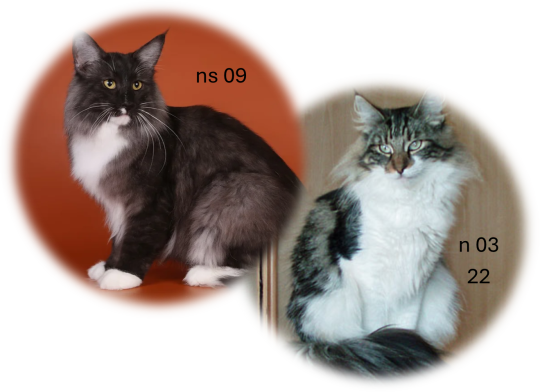
Black smoke with white - ns 09
Genotype: aa D_ E_ I_ __ oo/o- __ __ wsw
Black blotched tabby bicolor - n 03 22
Genotype: A_ D_ E_ ii mcmc oo/o- spsp titi ws_
#polls#cats#tournament poll#nfo color tournament#round 3#black smoke with white#black blotched tabby bicolor
21 notes
·
View notes
Text

Black blotched tabby bicolor - n 03 22
Genotype: A_ D_ E_ ii mcmc oo/o- spsp titi ws_
Black silver shaded tabby - ns 11
Genotype: A_ D_ E_ I_ __ oo/o- __ __ ww + extreme wide band
#polls#tournament poll#round 2#nfo color tournament#black blotched tabby bicolor#black silver shaded tabby
15 notes
·
View notes
Text
The final battle


Black
Genotype: aa B_ C_ D_ __ E_ ii kk __ oo/o- __ __ ww __ __
Synonym submissions: All black, pure black cat, Solid black, Black. Just solid black. The kind where the eyes are the only distinguishable feature.
Submitter: @ergontropy, @chulacabra, @mr-beistie
Black tortoiseshell silver blotched tabby bicolor
Genotype: A_ B_ C_ D_ __ E_ I_ kk mcmc Oo spsp titi wsw or wsws Wb_ wb'wb'
Synonym submissions: black silver calico
Submitter: @sweetcreatortimetravel
#i won't add any propaganda here because it would be very asymmetrical and i don't like it#but i'll reblog anything you wrote#polls#cats#tournament poll#cat color tournament#round 6#black#black tortoiseshell silver blotched tabby bicolor#round 1
447 notes
·
View notes
Text

Black bicolor - n 03
Genotype: aa D_ E_ ii __ oo/o- __ __ ws_
Red blotched tabby - d 22
Genotype: A_ D_ __ ii mcmc OO/O- spsp titi ww
(What do these letters mean?)
35 notes
·
View notes
Note
Do you have any tips on telling the difference between different varieties of tabby on long-coated cats? Like 95% of the examples on google are shorthair tabbies.
I can't say anything in good conscience, sorry. If it's a cat around you and not just a picture, try to get a look in the sun, that can help to see the patterns better.
Blotched is usually (but not always) recognisable of the bigger dark patches, but i have a very hard time differentiating between mackerel and spotted tabbies, the pattern too easily gets too blurred to say anything confidently. Best i think is, um, checking them when they're young, and the pattern is more visible. Not always possible, yeah.
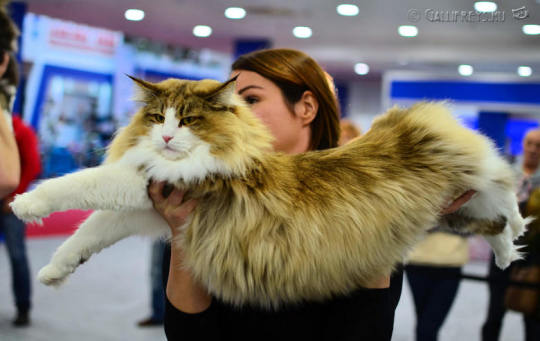
This cat is spotted, by the way.
#and she had the most mackerely mackerel son with a blotched tom#so she's *heterozygous spotted carrying mackerel*#black spotted tabby bicolor#ask and answer#to be honest i often don't trust the breeders either completely#i've seen 100% not blotched kits born from blotchedxblotched pairing; this officially can't happen so one of the parents had to be miscoded#and that's just blotched!
20 notes
·
View notes
Text


Black tortoiseshell silver blotched tabby bicolor
Genotype: A_ B_ C_ D_ __ E_ I_ kk mcmc Oo spsp titi wsw or wsws Wb_ wb'wb'
Synonym submissions: black silver calico
Submitter: @sweetcreatortimetravel
Black tortoiseshell bicolor
Genotype: aa B_ C_ D_ __ E_ ii kk __ Oo __ __ wsw or wsws __ __
Submitter: @teknoctarkamacska, @fuckingshitupjacket
Propaganda:
my bestest girl i cant imagine a more beautiful thing (with pics)
#polls#cats#tournament poll#cat color tournament#round 5#black tortoiseshell silver blotched tabby bicolor#black tortoiseshell bicolor
29 notes
·
View notes
Text


Black tortoiseshell bicolor
Genotype: aa B_ C_ D_ __ E_ ii kk __ Oo __ __ wsw or wsws __ __
Synonym submissions: i won't leave out dear Trapiti that's for sure
Submitter: @teknoctarkamacska
Propaganda:
#trapiti <3
Black tortoiseshell blotched tabby harlequin
Genotype: A_ B_ C_ D_ __ E_ ii kk mcmc Oo spsp titi wsws (occasionally wsw) Wb_ wb'wb'
Synonym submission: Calico
Submitter: @geeselouise
Propaganda:
Our Calico is the most friendly cat in the whole world- she greets all our neighbours in the apartment complex at the gate and walks them to their flats. She checks in on our elderly neighbour at night to make sure she's okay, and she makes best friends with all the local children who call her name and she will wake up from a nap to come play with them. She is a rescue and an absolute darling delight who has made the whole neighborhood more friendly to one another. Nellie for president!
this post 💕
#polls#cats#tournament poll#cat color tournament#round 3#black tortoiseshell bicolor#black tortoiseshell blotched tabby harlequin
23 notes
·
View notes